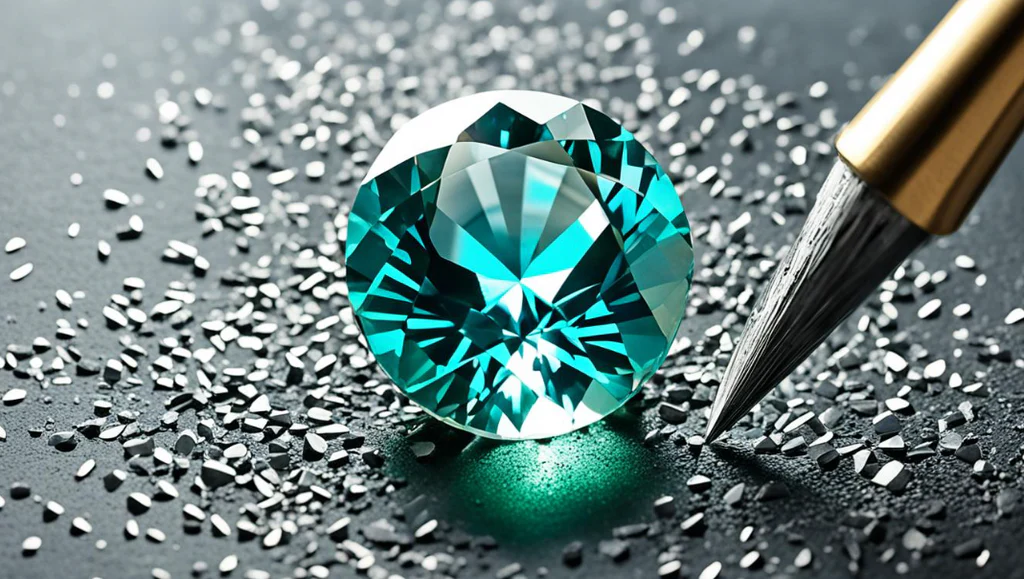Exploring the World of Gem Cuts: A Journey Through Sparkling Shapes
The beauty of a gemstone is not just about its color or clarity—it’s also about how it’s cut. Gem cuts play a crucial role in determining how a stone reflects light, appears to the human eye, and even how it’s valued. Whether it’s the sparkling brilliance of a round diamond or the sharp elegance of an emerald cut, the artistry behind cutting a gem is a world of its own.
In this article, we’ll explore the various types of gem cuts, their characteristics, and how each one influences the final look of a gemstone.
What Are Gem Cuts?
To put it simply, gem cuts refer to the way a gemstone is shaped and faceted. It involves carving the gem in a specific pattern so it can reflect light in a particular way. This process doesn’t just make the gem attractive—it also brings out its best features. A good cut can hide flaws, enhance color, and maximize brilliance.
Cutting a gem is both an art and a science. Jewelers consider multiple factors like symmetry, proportions, and angles to bring out the gem’s full potential. Different gem cuts are chosen depending on the type of gemstone and the desired effect.
The Importance of a Good Cut
The quality of gem cuts significantly affects a gemstone’s appearance. Even the most expensive stone can look dull if it’s poorly cut. On the other hand, a well-cut gemstone can appear more radiant and vibrant—even if it’s smaller or less clear.
Why is this important? Because most buyers focus on how the gem looks. Whether it’s a ring, a necklace, or a pair of earrings, people want something that sparkles and stands out. The right cut ensures just that.
Round Brilliant Cut
The round brilliant is the most well-known of all gem cuts. It features 57 or 58 facets that are precisely arranged to reflect the most light. This cut is particularly popular for diamonds, giving them that iconic sparkle.
It’s often the first choice for engagement rings because of its classic and timeless appeal. The round shape also makes it easier to set in various jewelry styles.
Princess Cut
The princess cut is square or slightly rectangular and known for its sharp angles and modern look. It is among the most popular gem cuts after the round brilliant.
Its shape works well in both traditional and contemporary settings. Despite its edges being more prone to chipping, the cut is loved for its clean lines and incredible fire (the way it disperses light into colors).
Emerald Cut
Unlike the brilliant cuts, the emerald cut has long, flat facets that produce a more subdued sparkle. This rectangular shape emphasizes clarity over brilliance, making it one of the most elegant gem cuts.
Because of its open facets, any inclusions (internal flaws) or color imperfections are more visible. Therefore, emerald cuts are usually used with high-quality stones.
Marquise Cut
The marquise cut is oval with pointed ends, giving it a boat-like shape. This type of gem cuts is perfect for making fingers appear longer and more slender when used in rings.
Its long surface area makes the gem look larger than it is, which is great for those who want a bold statement without paying for a bigger stone.
Other Notable Gem Cuts
While round, princess, emerald, and marquise are the most widely recognized, there are many other gem cuts that jewelers use to bring out the personality of different stones.
Oval Cut
This is similar to the round brilliant but with an elongated shape. It’s a versatile cut that works well in most types of jewelry.
Cushion Cut
A blend of a square and a round, the cushion cut has soft, rounded edges. It’s often used in vintage-style pieces and provides a romantic, classic look.
Pear Cut
Shaped like a teardrop, the pear cut is unique and elegant. It combines the brilliance of the round cut with a pointed edge for added drama.
Heart Cut
A symbol of love, the heart-shaped cut is one of the most difficult to achieve. Precision is key, and it’s usually reserved for romantic gifts.
How Gem Cuts Affect Value
Not all gem cuts are created equal in terms of value. Some cuts waste more of the rough stone, making them more expensive to produce. Others might be easier to cut but not as desirable in the market.
The cut also influences how the gem looks in different lighting. For example, a poorly cut gem may appear dull under indoor lighting, even if it looks decent in sunlight.
Jewelers and gemologists often evaluate gem cuts by looking at symmetry, polish, and proportions. These technical aspects help determine whether a gem has been cut skillfully.
Choosing the Right Gem Cut for You
When buying a gemstone, personal style should guide your choice. If you prefer something flashy, go for a brilliant cut. If you like understated elegance, an emerald cut might be better.
It’s also important to match the cut to the gemstone type. Some gem cuts are more suitable for softer stones, while others are ideal for hard, durable gems like diamonds or sapphires.
Budget plays a role too. Some cuts, like round brilliants, cost more due to waste in the cutting process. Others, like ovals and cushions, offer great value for their size.
The Art Behind Gem Cutting
Behind every finished gemstone lies the hand of a skilled cutter. These artisans often train for years to master the craft. Each cut requires precision tools, careful planning, and a deep understanding of how light moves through a gem.
The cutter must balance beauty with practicality, often making tiny adjustments to get the most out of each stone. This is especially important for rare or expensive stones, where mistakes can be costly.
The world of gem cuts is full of tradition, innovation, and craftsmanship—something most people overlook when admiring a sparkling ring or pendant.
Final Thoughts
In the world of gemstones, how a gem is cut makes all the difference. The cut determines its brilliance, value, and overall beauty. From the timeless round brilliant to the bold marquise, every cut tells a story of skill and style.
Understanding gem cuts helps you make better choices when buying jewelry, whether it’s for yourself or someone special. Next time you admire a shimmering gemstone, take a moment to appreciate the artistry behind its shape. There’s a lot more to it than meets the eye.





